AMD Reveals The Radeon RX 6000 Series: RDNA2 Starts At The High-End, Coming November 18th
by Ryan Smith on October 28, 2020 12:25 PM EST- Posted in
- GPUs
- AMD
- Radeon
- RDNA2
- RX 6000 Series
- RX 6800 XT
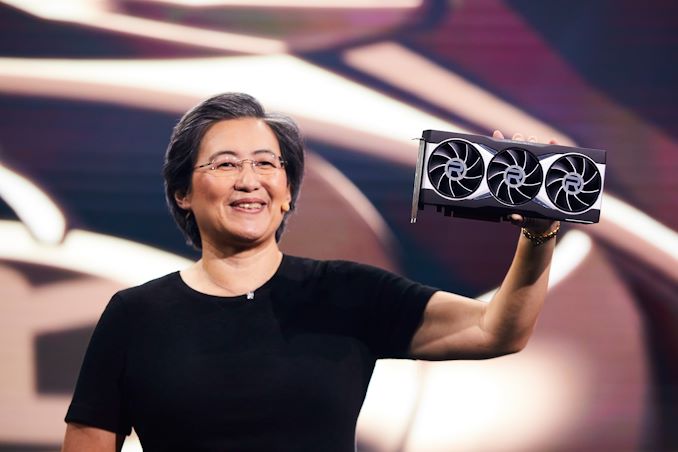
Preparing to close out a major month of announcements for AMD – and to open the door to the next era of architectures across the company – AMD wrapped up its final keynote presentation of the month by announcing their Radeon RX 6000 series of video cards. Hosted once more by AMD CEO Dr. Lisa Su, AMD’s hour-long keynote revealed the first three parts in AMD’s new RDNA2 architecture video card family: the Radeon RX 6800, 6800 XT, and 6900 XT. The core of AMD’s new high-end video card lineup, AMD means to do battle with the best of the best out of arch-rival NVIDIA. And we’ll get to see first-hand if AMD can retake the high-end market on November 18th, when the first two cards hit retail shelves.
AMD’s forthcoming video card launch has been a long time coming for the company, and one they’ve been teasing particularly heavily. For AMD, the Radeon RX 6000 series represents the culmination of efforts from across the company as everyone from the GPU architecture team and the semi-custom SoC team to the Zen CPU team has played a role in developing AMD’s latest GPU technology. All the while, these new cards are AMD’s best chance in at least half a decade to finally catch up to NVIDIA at the high-end of the video card market. So understandably, the company is jazzed – and in more than just a marketing manner – about what the RX 6000 means.
Anchoring the new cards is AMD’s RDNA2 GPU architecture. RDNA2 is launching near-simultaneously across consoles and PC video cards next month, where it will be the backbone of some 200 million video game consoles plus countless AMD GPUs and APUs to come. Accordingly, AMD has pulled out all of the stops in designing it, assembling an architecture that’s on the cutting-edge of technical features like ray tracing and DirectX 12 Ultimate support, all the while leveraging the many things they’ve learned from their successful Zen CPU architectures to maximize RDNA2’s performance. RDNA2 is also rare in that it isn’t being built on a new manufacturing process, so coming from AMD’s earlier RDNA (1) architecture and associated video cards, AMD is relying on architectural improvements to deliver virtually all of their performance gains. Truly, it’s AMD’s RDNA2 architecture that’s going to make or break their new cards.
Over the coming months, RDNA2 will filter down into an increasing number of AMD chip designs. But for now, in the PC space, AMD is starting with enthusiast-level video cards. The first RDNA2 GPU out of the works is Navi 21 – AKA “Big Navi” – which AMD will be using as the basis of a trio of video cards. These are the Radeon RX 6900 XT, 6800 XT, and 6800 respectively. With these latest cards, AMD is aiming squarely at NVIDIA’s recently-launched GeForce RTX 30-series lineup, aiming to meet (or beat) the RTX 3090, 3080, and 3070 respectively. Suffice it to say, AMD hasn’t been able to match NVIDIA’s top cards for several years now, so these are very bold claims from a company that has re-learned how to become very bold in the last five years.
| AMD Radeon RX Series Specification Comparison | ||||||
| AMD Radeon RX 6900 XT | AMD Radeon RX 6800 XT | AMD Radeon RX 6800 | AMD Radeon RX 5700 XT | |||
| Stream Processors | 5120? (80 CUs) |
4608? (72 CUs) |
3840 (60 CUs) |
2560 (40 CUs) |
||
| ROPs | 128 | 128 | 96 | 64 | ||
| Game Clock | 2015MHz | 2015MHz | 1815MHz | 1755MHz | ||
| Boost Clock | 2250MHz | 2250MHz | 2105MHz | 1905MHz | ||
| Throughput (FP32) | 20.6 TFLOPs | 18.6 TFLOPs | 13.9 TFLOPs | 9.75 TFLOPs | ||
| Memory Clock | 16 Gbps GDDR6 | 16 Gbps GDDR6 | 16 Gbps GDDR6 | 14 Gbps GDDR6 | ||
| Memory Bus Width | 256-bit | 256-bit | 256-bit | 256-bit | ||
| VRAM | 16GB | 16GB | 16GB | 8GB | ||
| Infinity Cache | 128MB | 128MB | 128MB | N/A | ||
| Total Board Power | 300W | 300W | 250W | 225W | ||
| Manufacturing Process | TSMC 7nm | TSMC 7nm | TSMC 7nm | TSMC 7nm | ||
| Transistor Count | 26.8B | 26.8B | 26.8B | 10.3B | ||
| Architecture | RDNA2 | RDNA2 | RDNA2 | RDNA (1) | ||
| GPU | Navi 21 | Navi 21 | Navi 21 | Navi 10 | ||
| Launch Date | 12/08/2020 | 11/18/2020 | 11/18/2020 | 07/07/2019 | ||
| Launch Price | $999 | $649 | $579 | $399 | ||
As today’s announcement is not a full tech deep dive – like the Zen 3 announcement, the deep dive will come closer to launch – AMD is only sharing some high-level specifications of the new cards. But with information on the number of CUs, memory support, and power consumption now in hand, we have a good idea of what AMD is bringing to the table, and why they believe the RX 6000 series will once again make them fully-competitive at the high-end.
Radeon RX 6900 XT
Amongst AMD’s video card stack, the company is taking a very similar tack as NVIDIA. So although the RX 6900 XT is technically their flagship part, at $999 it's still in a similar “more money than sense” category as the RTX 3090 – which is to say that AMD is looking to charge a good premium for the card. Since it’s based on a fully-enabled (and undoubtedly heavily binned) Navi 21 GPU, it’s the hardest part for AMD to produce, and thus the rarest. How rare remains to be seen, but as Navi 21 is undoubtedly a large chip thanks to the 26.8 billion transistors housing 80 CUs and 128MB Infinity Cache (more on that later), I don’t expect AMD to be flooding the market with 6900 XTs any time soon.
At any rate, the card will be the full Navi 21 experience. All 80CUs will be enabled, and thanks to AMD’s efforts in optimizing the RDNA2 architecture for clockspeeds, it will have a game clock of 2015MHz and a peak turbo clock (boost clock) of 2250MHz. Assuming that AMD hasn’t done anything too crazy with the RDNA2 architecture, this means that the card will have an average FP32 shader throughput of around 20.6 TFLOPS, more than double the throughput of the RX 5700 XT – and right in line with AMD’s goals to double their performance over the RX 5000 series.
On the memory side of matters the card comes with 16GB of GDDR6. AMD is not officially disclosing the memory clockspeed, but based on current tech trends we’re expecting that GDDR6 to be running at 16 Gbps/pin (which AMD has since confirmed). Meanwhile, based on other AMD slides, it looks like this memory is attached to a 256-bit memory bus, which would give the card a total memory bandwidth of 512GB/sec. This is admittedly a bit anemic for a flagship video card, and is where AMD’s new Infinity Cache technology will come into play.
Finally, AMD says that the card will have a Total Board Power (TBP) of 300W. At a time when ASIC designers everywhere are struggling to keep power consumption in check – and when even NVIDIA’s top cards now hit 350W – a 300W TBP is a significant claim. Not only is it potentially a competitive advantage for AMD, but it means they haven’t needed to increase their TBP versus their previous high-end card, the also 7nm-based Radeon VII.
With all of that said, however, some expectation management is in order. Although AMD is comparing the RX 6900 XT to NVIDIA’s RTX 3090, there are a few potential gotchas involved. We’ll break down AMD’s specific performance claims and benchmark slides later, but suffice it to say and as AMD is pitching things now, if the RX 6900 XT can match the 3090, it’s going to be at the very top edge of the AMD card’s performance profile, overclocking included. Which would go hand-in-hand with the heavy binning mentioned earlier.
Radeon RX 6800 XT
Moving down the line we have the Radeon RX 6800 XT. Based on a slightly cut-down Navi 21 GPU, this is the AMD card that mere mortals can afford. At $650 it’s still expensive, to say the least, but significantly less so than the $1000 6900 XT.
Out of the box, the RX 6800 XT comes with 72 CUs enabled. Combined with clockspeeds identical to the RX 6900 XT – a game clock of 2015MHz and a boost clock of 2250MHz – and pending additional technical details from AMD, the card should average around 18.6 TFLOPS of FP32 shader performance. Relative to the RX 5700, this is just under 2x the performance of AMD’s last-gen leading card.
Other than the reduction in CUs, according to AMD’s specifications there are no other notable differences between the RX 6800 XT and RX 6900 XT. The more affordable card still comes with 16GB of GDDR6 memory, and I expect it’ll be clocked at 16 Gbps/pin as well, giving it an expected total bandwidth of 512GB/sec. Augmenting this, like all of today’s cards, will be 128MB of AMD’s Infinity Cache. Meanwhile the card’s TBP carries the same 300W rating as the 6900 XT as well.
AMD is positioning this card directly against NVIDIA’s RTX 3080; and unlike the 6900 XT, there are no asterisks to speak of here. So if AMD can deliver on their claims, then this 6800 XT will be doing so right out of the box. In which case, meeting the 3080 in performance and possibly beating it in power consumption would be a big win for AMD and the RDNA2 architecture, and a sign of how far they’ve come in the last few years.
Overall, given AMD’s performance expectations and pricing, along with the expected competition, it’s unsurprising that AMD led with this card today for the Radeon keynote. It’s technically not the flagship, but like the RTX 3080 on NVIDIA’s side, it’s going to be the card that garners the most attention.
Radeon RX 6800
It will be the final card in AMD’s new product stack, however, that will garner the most in sales. Rounding out the Navi 21 trio of cards we have the Radeon RX 6800, a further cut-down Navi 21 part that trades off a drop in performance for lower power consumption and a cheaper $579 price.
The RX 6800 will ship with 60 CUs (3 shader engines) enabled, and with the fourth shader engine disabled, this by and large makes it three-quarters of a full Navi 21. Relative to the other cards, clockspeeds are going to be lower, with a game clock of 1815MHz and a boost clock of 2105MHz. Which, per our math, would give the card 13.9 TFLOPS of FP32 shader performance, or around 75% of the shader performance of the RX 6800 XT.
Surprisingly, AMD isn’t dialing back their memory configuration here. Despite being the third and most budget-friendly card in the stack, the vanilla RX 6800 still ships with 16GB of GDDR6 memory. And while I suspect AMD will go with cheaper 14Gbps memory here – giving the card 448GB/sec of bandwidth – that’s still a lot of memory overall. Similarly, AMD isn't using lower-clocked memory either; even the RX 6800 gets the same top-tier 16 Gbps/pin memory (and resulting 512GB/sec of memory bandwidth) that the other cards are getting. Furthermore the complete 128MB Infinity Cache will be available as well, so the GPU itself still has a full pool of its fastest local memory on-hand.
Typical for lower-tier cards, the RX 6800 also carries a lower TBP rating of 250W, 50W less than the RX 6800 XT. AMD of course is no stranger to offering high-powered cards, but in some respects the RX 6800 is going to be the most interesting of the bunch, as it’s going to be our first chance to look at what RDNA2 can do at a more reasonable TBP.
For the moment, AMD is classifying the RX 6800’s performance relative to NVIDIA’s RTX 2080 Ti. In reality this is card that will (roughly) compete with the RTX 3070 – the same card that replaced the RTX 2080 Ti – but as RTX 3070 doesn’t launch until tomorrow, AMD doesn’t have a card that they draw apples-to-apples comparisons against. So for the moment, AMD is instead playing with the transitive property of equality.
With AMD’s own launch not coming until November 18th, there’s still plenty of time for AMD to frame this card’s performance with respect to the RTX 3070, so it will be interesting to see what (if anything) they have to say in a week’s time. AMD’s promotional material places the RX 6800 ahead of the RTX 2080 Ti, but we’ll see if that holds true for the RTX 3070 as well. For now, AMD seems very confident that they're going to beat NVIDIA's cheapest RTX-30 series card, and with a projected performance and VRAM capacity lead they've priced it accordingly at $579.
One other curiosity on positioning is that AMD is also promoting the RX 6800 as a 4K gaming card, just like its more powerful siblings. Working to the card’s advantage, its 16GB of VRAM means that it has plenty of memory to handle the larger buffers that come with the higher resolution. However as the card only has 75% of the RX 6800 XT’s theoretical shader performance, I do wonder whether it’s going to be outright fast enough for 4K over the long run. Current-generation games should be very doable, judging from what the RTX 3080 and RTX 2080 Ti can do, however there’s a bit more concern over the long run as game developers switch to the next-gen consoles as their performance and feature baselines. In which case, the RX 6800 will instead be AMD’s 1440p gaming king, and fittingly the company has published some 1440p performance slides for the card alongside the 4K performance slides.
Overall, AMD some very ambitious performance goals for the Radeon RX 6000 series of cards. At this point AMD knows exactly what kind of performance they need to deliver to take on NVIDIA for the high-end, and the company believes that the Navi 21 GPU they’ve built is just the tool to do that. Now with 3 weeks to go until the first RX 6800 series cards launch, it’s just a matter of time until we can see first-hand whether AMD can deliver on those ambitious, RDNA2-fueled promises.


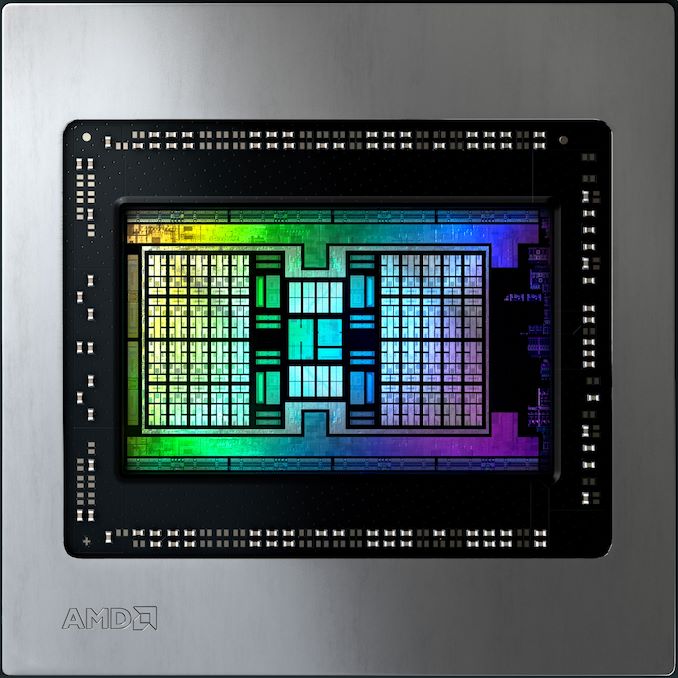
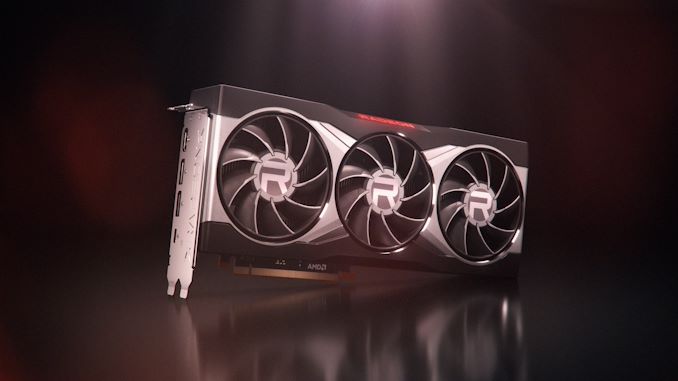






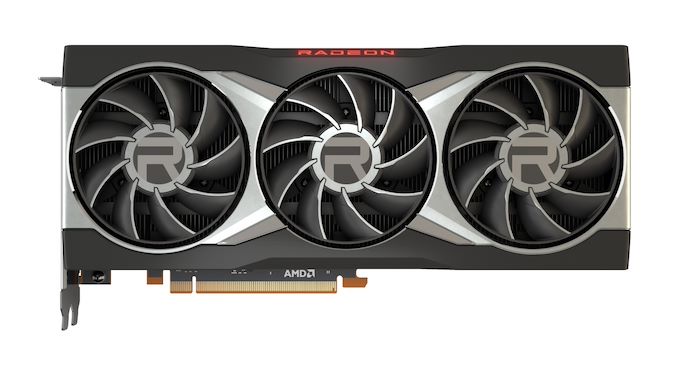






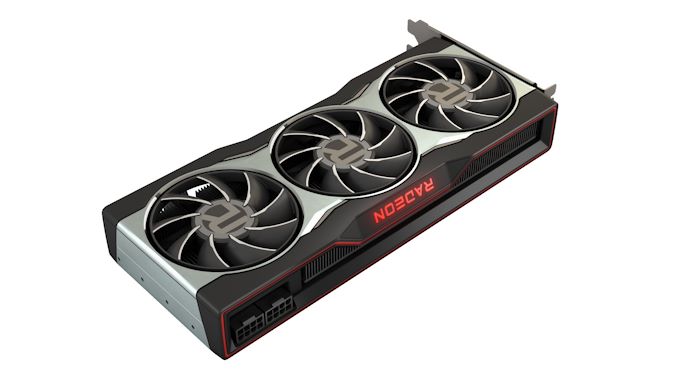






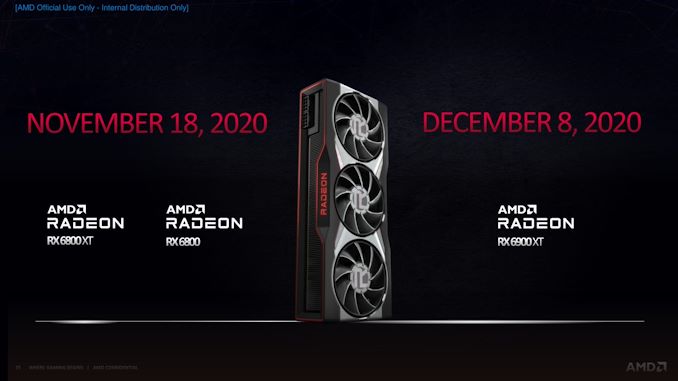














274 Comments
View All Comments
NikosD - Saturday, October 31, 2020 - link
I certainly don't want to be misunderstood, I'm very pleased by RX 6000 series announcement.But the similarity of 6800 XT and 6900 XT cards n all but number of CUs (80 vs 72) it's very strange to me.
I have never mentioned anything exaggerated regarding clock frequency like 2.8GHz. I only said 10% more than the existent.
I don't want to repeat myself but 300W for both 6800XT and 6900 XT simply doesn't fit
Hopefully my comments were heard by AMD (!) and we will see what AIBs can say regarding 6900 XT
And I really hope for AMD to allow them to do whatever they think they have to do in order to be even more competitive with 3090, meaning to increase clocks and TDP:
https://videocardz.com/newz/amd-in-talks-with-aibs...
Budburnicus - Tuesday, November 3, 2020 - link
Power has a HARD LIMIT on scaling!Would an RX 6900XT get better FPS when running at 350+ watts? Yes - but it likely would not exceed about a ~4% improvement - and that is being generous.
Also, just because AMD has not SOLD a 350 watt card in RDNA 2 - you do realize that power sliders exist. For example: I currently (til RDNA 2 and Ampere are in stock) - use a G1 Gaming GTX 980 Ti, a 250 watt GPU, but because I can add +39% to the power slider, I can FEED my GPU 348 watts! As a result, instead of a variable boost around ~1.3 GHZ, my 980 Ti is 100% frequency stable a 1501 MHZ core, and 8 Gbps VRAM (a 14% OC on VRAM too)
There are 980 Tis with 3 pins, and on air, even those max out around ~1580 MHZ, and there is less than 1% difference FPS from my 1501. In fact, the diminishing return REALLY start around 1400 MHZ for GeForece 900 (Maxwell) series - you can throw 500 watts at the card with LN2 cooling nearing 1700 MHZ core, and it BARELY touches frame rates.
Look at RDNA 1, and Ampere - you can add available power ALL DAY - see the ASRock 5700XT Taichi - and while you MIGHT even surpass 10% extra frequency, but performance? Closer to about 2% - especially with Ampere - but Turning was similar as well. The 5700XT GPUs all boost as fast as they can, and notice how there is BARELY EVER more than 2% speed between the best and worst (referencc) models!
The ONLY thing that might make frequency scale better with EXCESSIVE power in RDNA 2 is the Infinity Cache. If Overclocking increases the bandwidth and decreases the active latency to said Infinity Cache. But even then, every uArch has a limit, and a point of diminishing returns.
AMD COULD have sold the 6900XT at 350+ watts, but that would, at best, probably net it another ~5% FPS being generous.
Believe me when I say, IF AMD COULD have sold a 6950XT with insane clocks and power budget that actually STOMPED the RTX 3090 - they DEFINITELY WOULD HAVE!
(They still might, Water cooled edition or something) - but it won't be worth the price, hell the 6900XT isn't worth it with the 6800XT being ~$350 cheaper, and seemingly 98% as fast or more. And after ACTUAL overclocking, I bet 6900XT is all but tied.
AMD is finally being seen a a "Premium Product" - for the last 15 years AMD were B tier at best, but Zen2 has shown AMD can provide class leading performance and efficiency.
Notice the LACK of AMD GPUs in Laptops? Notice how the few laptops with AMD GPUs could NEVER keep up with Nvidia at the same power? AMD has NEVER been a big player in Mobile GPUs - but with THIS EFFICIENCY AND DESIGN - AMD are poised to STOMP Ampere GPUs in Laptops! Which is a GIGANTIC and growing market - my bro has a RTX 2070 laptop, he gave me his old GTX 1060 model! Those are the only PCs he buys.
And now AMD has both CPUs and GPUs that can WIN MOBILE GAMING! That is the master plan, after capturing ~50% or better of the Desktop Discrete GPU market anyway!
mirasolovklose - Sunday, November 1, 2020 - link
Yes, I would imagine the choice of clock speed would also be based on no. of units they can get with 80CUs at chosen clock. So it's quite possible this was purely yield based decision.d0x360 - Thursday, October 29, 2020 - link
Shhhh the ps5 doesn't use RDNA2... They confirmed it today. It's more like RDNA 1.5 and closer to 1. The xbox is the only RDNA2 console.Qasar - Friday, October 30, 2020 - link
d0x360, sorry but you are wrong. the PS5 does use rdna 2:https://en.wikipedia.org/wiki/PlayStation_5#Hardwa...
" The PlayStation 5 is powered by a custom 7nm AMD Zen 2 CPU with eight cores running at a variable frequency capped at 3.5 GHz.[9] The GPU is also a custom unit based on AMD's RDNA 2 graphics architecture. It has 36 compute units running at a variable frequency capped at 2.23 GHz and is capable of 10.28 teraflops "
https://www.tomshardware.com/news/ps5-rumor-specs-...
https://www.techradar.com/news/ps5#section-ps5-spe...
where did you see the ps5 doesnt use rdna2 ?
Spunjji - Friday, October 30, 2020 - link
Yeah, really not sure what d0x360 is on with this RDNA 1.5 crap. I just did a Google and it looks to be people misunderstanding Microsoft's marketing materials about "RDNA 2 integration" (e.g. software and hardware) and then extrapolating from there - in this case, to an extent that can only be described as absurd.haukionkannel - Friday, October 30, 2020 - link
Full 80cu chips Are very rare! So it is no use to give aib something that They don`t have enough to sell... for example sua would need several 6900xt chips... and because amd does not have that Many. No need to sell them to asus.d0x360 - Thursday, October 29, 2020 - link
Ahem...AMD could always release a 6950 and 6950xt. Think gddr6x instead of just 6, bigger bus, maybe more infinity cache, higher TDP so we can see those magical leaks that showed up to 2.8ghz, more cores, 4 more gigs of memory..and priced at $1300Now they would be winning by a large margin and have a lower price. They could do the same across the entire line. 6850xt, more ram, gddr6x, more cache..that alone could allow it to spank the 3080ti (20 gig variant)
Spunjji - Friday, October 30, 2020 - link
GDDR6X = more power use, more costBigger bus = non-trivial adaptation, more power and cost
More infinity cache = new die, WAY more cost
4 GB more memory = more cost, power, and a weird bus arrangement
Maybe that would get them enough performance for leadership, maybe not, but it would spoil their obvious focus on producing performance-competitive cards that can still generate high margins. They were unable to do that with Fury and Vega because of the costs of the HBM vs the performance achieved - switching to a larger bus or a new die would have a similar effect, not even accounting for the extra costs of qualification. GDDR6X is a *maybe* for a refresh part, I guess, but that would ruin their power efficiency.
SaturnusDK - Saturday, October 31, 2020 - link
The whole point of Infinity Cache is to remove the bandwidth constraints of GDDR6 to achieve an effective bandwidth that is higher than the one the 3090 gets with its 384-bit bus and GDDR6X. In fact quite a bit higher. There would be literally no point in using GDDR6X for AMD as the effective performance increase would be minuscule.I do think a 6950XT is possible if AMD feels the need for it but it would be a limited issue version using very rare binned chips to get slightly higher clock speed, and would almost certainly double the VRAM to 32GB.